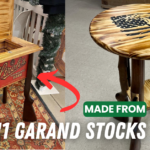I. Introduction to Upcycling Wool Sweaters
II. Step-by-Step Guide to Creating a Diaper Cover
III. Benefits of Using Wool Diaper Covers
Introduction to Upcycling Wool Sweaters
Hey there, fellow eco-enthusiasts! If you’ve ever found yourself staring at a pile of old wool sweaters that have seen better days, you might be onto something really special. Upcycling wool sweaters is not just a creative outlet; it’s a fantastic way to breathe new life into items that would otherwise be relegated to the back of your closet—or worse, the landfill. Let’s dig into why upcycling wool is a brilliant idea and how you can turn those neglected sweaters into something fabulous.
What is Upcycling?
Before we dive into the wooly goodness, let’s chat a bit about what upcycling actually means. Upcycling is the process of transforming unwanted materials into new products of higher quality or value. It’s like giving your old things a second chance! Not only does this contribute to sustainability, but it also allows you to express your creativity while reducing waste.
Why Wool?
You might be wondering, “Why should I specifically use wool sweaters?” Wool is a fantastic material for many reasons:
- Durable: Wool is known for its longevity. Even an old sweater can still have plenty of life left!
- Insulating Properties: Wool offers excellent insulation, making it perfect for items that need to keep warmth or moisture at bay.
- Biodegradable: Unlike synthetic fibers, wool is a natural fiber that biodegrades when it’s no longer needed, which is great for the planet.
- Soft and Comfortable: When crafted into new items, wool remains soft and cozy, especially if you choose high-quality garments.
- Unique Patterns and Textures: Each sweater has its own unique design, which adds character to your upcycled projects.
Getting Started
So, how do you get started? The first step is to gather those old sweaters! Look for ones that might have holes, pilling, or are simply no longer your style. Don’t shy away from vibrant colors or funky patterns; these can bring a fun flair to your projects!
Next, you’ll want to wash and felt the sweaters. Felting is a process that makes the wool denser and easier to work with, preventing it from unraveling in your new creation. It’s as simple as tossing the sweaters into the washing machine on hot, followed by a tumble dry. Just make sure to keep an eye on them, as wool does have a tendency to shrink!
Connecting with the Community
One of the best parts about upcycling is the community surrounding it. There are countless groups, both online and in-person, where you can share your projects, seek advice, and even swap materials. Social platforms are brimming with inspiration, so don’t hesitate to dive in and connect with fellow crafters!
In summary, upcycling wool sweaters is not only a creative and fulfilling activity, but it also contributes positively to the environment. With just a little effort, you can transform your old wool into something that is both functional and fabulous. Now that you’re excited about the possibilities, get ready to dive into the next step—creating something amazing!
Step-by-Step Guide to Creating a Diaper Cover
So, you’ve got an old wool sweater lying around, and you’re itching to transform it into something practical and adorable. Well, you’re in luck! In this guide, we’ll walk you through the delightful process of upcycling that sweater into a cozy, effective wool diaper cover. Ready? Let’s dive in!
What You’ll Need
Before you start cutting and sewing, let’s gather our materials:
- One old wool sweater (the thicker, the better!)
- Scissors
- Sewing machine or needle and thread
- Measuring tape
- Chalk or fabric marker
- Elastic (optional, for a snug fit)
- Wool wash (for finishing touch)
Step 1: Prepare Your Sweater
Start by giving your sweater a good wash. This helps to felt the wool, making it thicker and more water-resistant. After washing, throw it in the dryer on a medium heat setting until it shrinks to your desired size. Remember, a little shrinkage goes a long way!
Step 2: Measure and Cut
Once your sweater is dry, it’s time to measure! You’ll need the following measurements:
- Waist circumference
- Length from waist to crotch
- Leg openings (thigh circumference)
Using your chalk or fabric marker, mark out the shape of your diaper cover on the sweater. A simple pattern that includes a wider top for the waist and tapered legs will do the trick. Cut carefully along your lines. Don’t worry about perfection; a little imperfection adds character!
Step 3: Sew the Edges
Now, it’s time to sew! If you’re using a sewing machine, set it up with a zig-zag stitch to allow for stretch. Sew along the cut edges to prevent fraying. If you’re hand sewing, a simple whip stitch will work just fine. Remember to leave the leg openings unsewn for that cozy fit!
Step 4: Add Elastic (Optional)
If you want your diaper cover to fit snugly, consider adding some elastic around the waist and leg openings. This step is optional but can help keep everything in place. To do this, simply measure out your elastic, cut it to size, and sew it into the seams you’ve just created.
Step 5: Final Touches
Give your new diaper cover a gentle wash with wool wash to soften it up and ensure it’s ready for baby’s bottom. Lay it flat to dry, and voilà! You have a lovely, upcycled wool diaper cover that’s both functional and environmentally friendly.
Conclusion
Creating a wool diaper cover from an old sweater is not only a fun craft but also a wonderful way to give new life to materials that might otherwise go to waste. Plus, you get the satisfaction of making something special for your little one. Happy crafting!
Benefits of Using Wool Diaper Covers
When it comes to diapering your little one, you might be surprised to learn that wool diaper covers are gaining popularity among parents. They’re not just eco-friendly; they come with a whole bunch of benefits that can make your parenting journey a bit smoother. Let’s dive into why you might want to consider making the switch to wool diaper covers!
Natural and Breathable
One of the standout features of wool is its natural breathability. Unlike synthetic materials, wool allows air to circulate, helping to keep your baby’s skin dry and comfortable. This can be particularly beneficial for little ones who are prone to diaper rash. When the skin can breathe, it reduces the likelihood of irritation, and we all know how important it is to keep those tiny bottoms happy!
Absorbent Properties
Wool has a unique ability to absorb moisture. It can hold up to 30% of its weight in water without feeling wet! This means that when you use a wool diaper cover over cloth diapers, it can help to manage moisture effectively. If your baby has a heavy wetter, you’ll appreciate this benefit immensely. Plus, the absorbency of wool can prevent leaks, giving you peace of mind during those long nights.
Temperature Regulation
Wool is a natural insulator, which means it can help regulate your baby’s body temperature. Whether it’s hot or cold outside, wool works to keep your little one cozy. In the colder months, wool traps heat and keeps your baby warm, while in warmer weather, it wicks moisture away, preventing overheating. This temperature regulation can lead to a more comfortable diapering experience.
Durability and Longevity
When properly cared for, wool diaper covers can last for years. Unlike some materials that wear out quickly, wool is incredibly durable. This makes it an investment worth considering, especially if you’re planning on having more children. Additionally, when it’s time to pass those covers down, wool is a great option since it holds up well over time.
Eco-Friendly Choice
If you’re looking for ways to reduce your family’s carbon footprint, switching to wool diaper covers is a fantastic option. Wool is a renewable resource, and by upcycling old sweaters into diaper covers, you’re contributing to a more sustainable lifestyle. Plus, using cloth diapers in general helps reduce the amount of waste in landfills compared to disposable options. Your choices can make a significant impact!
Easy Care
While wool requires a bit of special care (like hand washing and air drying), many parents find it manageable. The natural lanolin in wool provides some built-in water resistance, which means you won’t have to wash them as often as you might think. A quick airing out between uses can keep them fresh and ready for action.
In Conclusion
Wool diaper covers offer a multitude of benefits that can enhance your cloth diapering experience. From their breathability to their eco-friendliness, they could be the perfect addition to your diapering routine. So why not give wool a try? Your baby’s bottom will thank you, and you’ll feel great about making a sustainable choice!






Comments